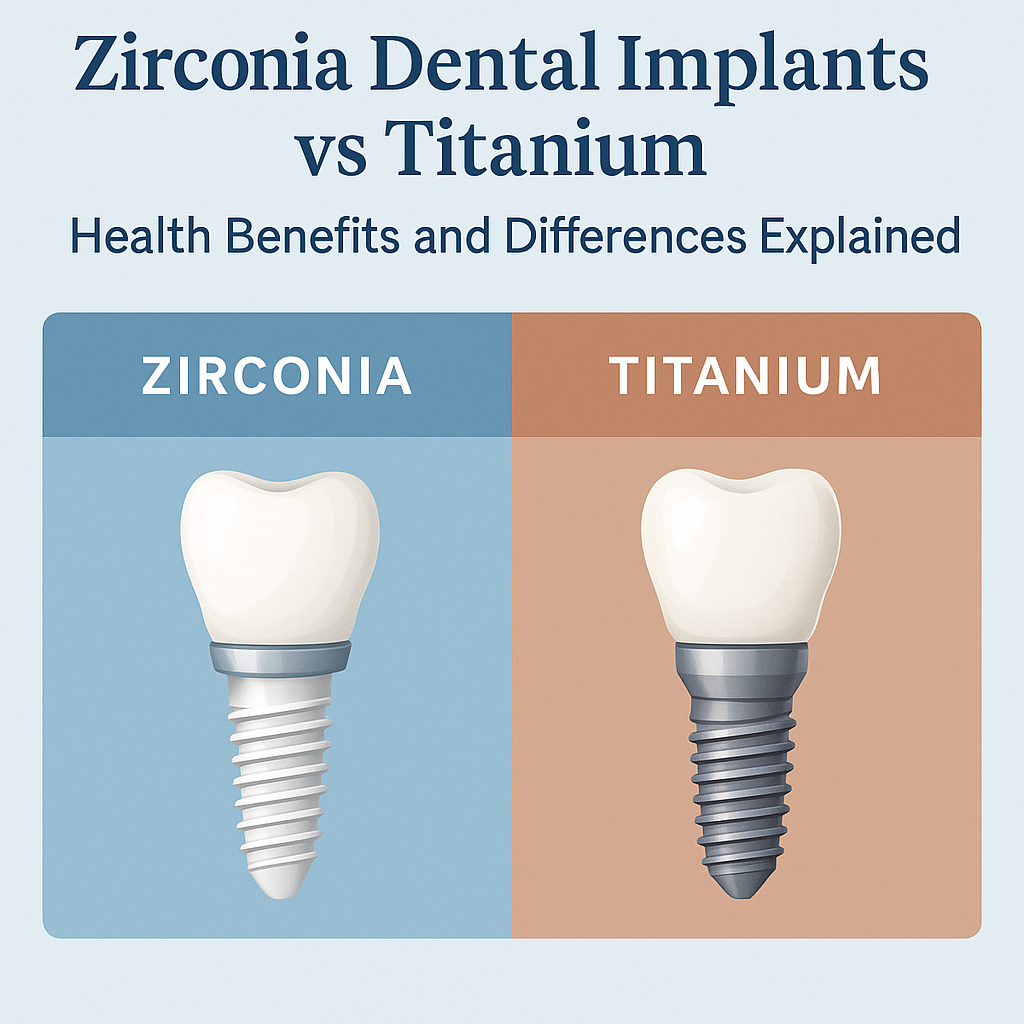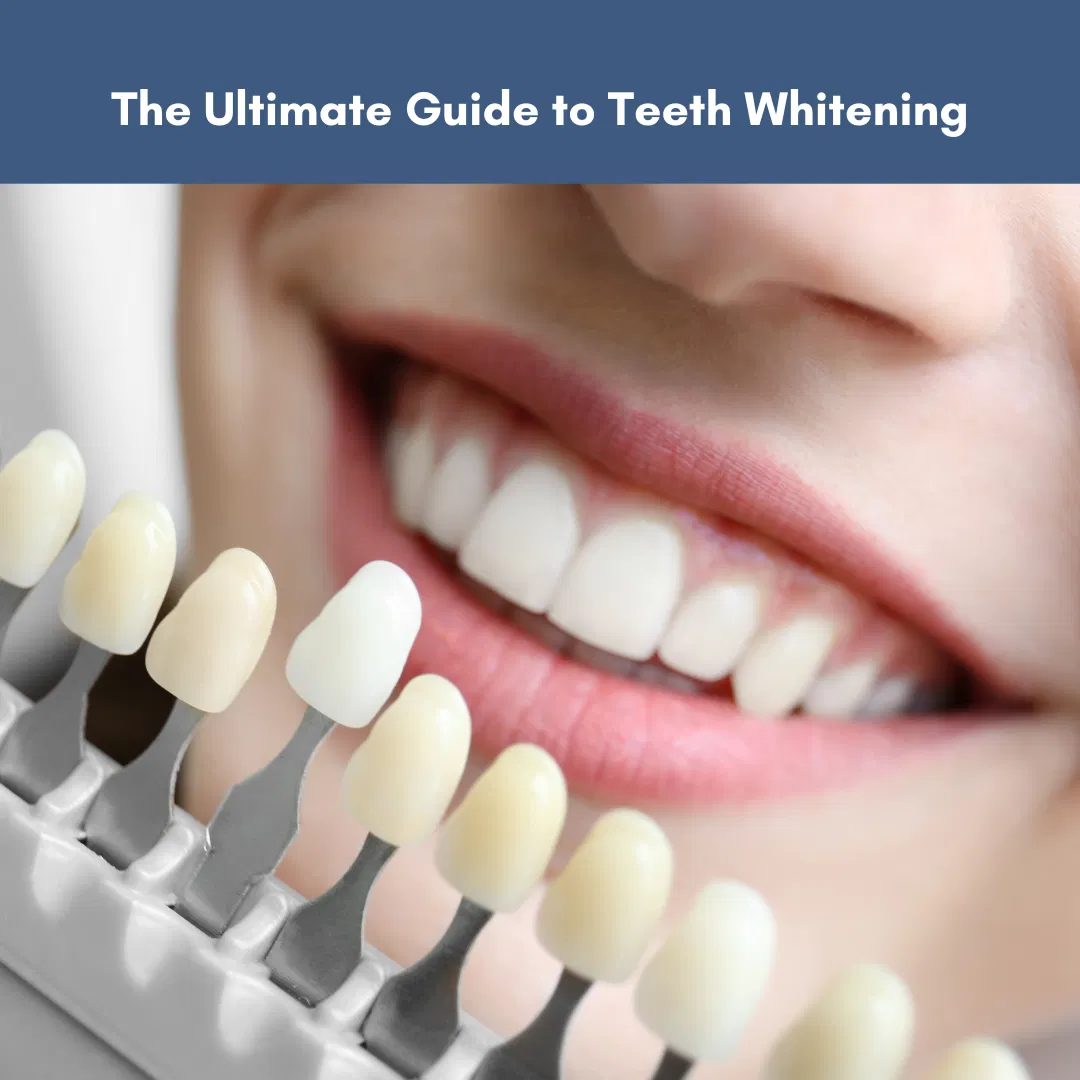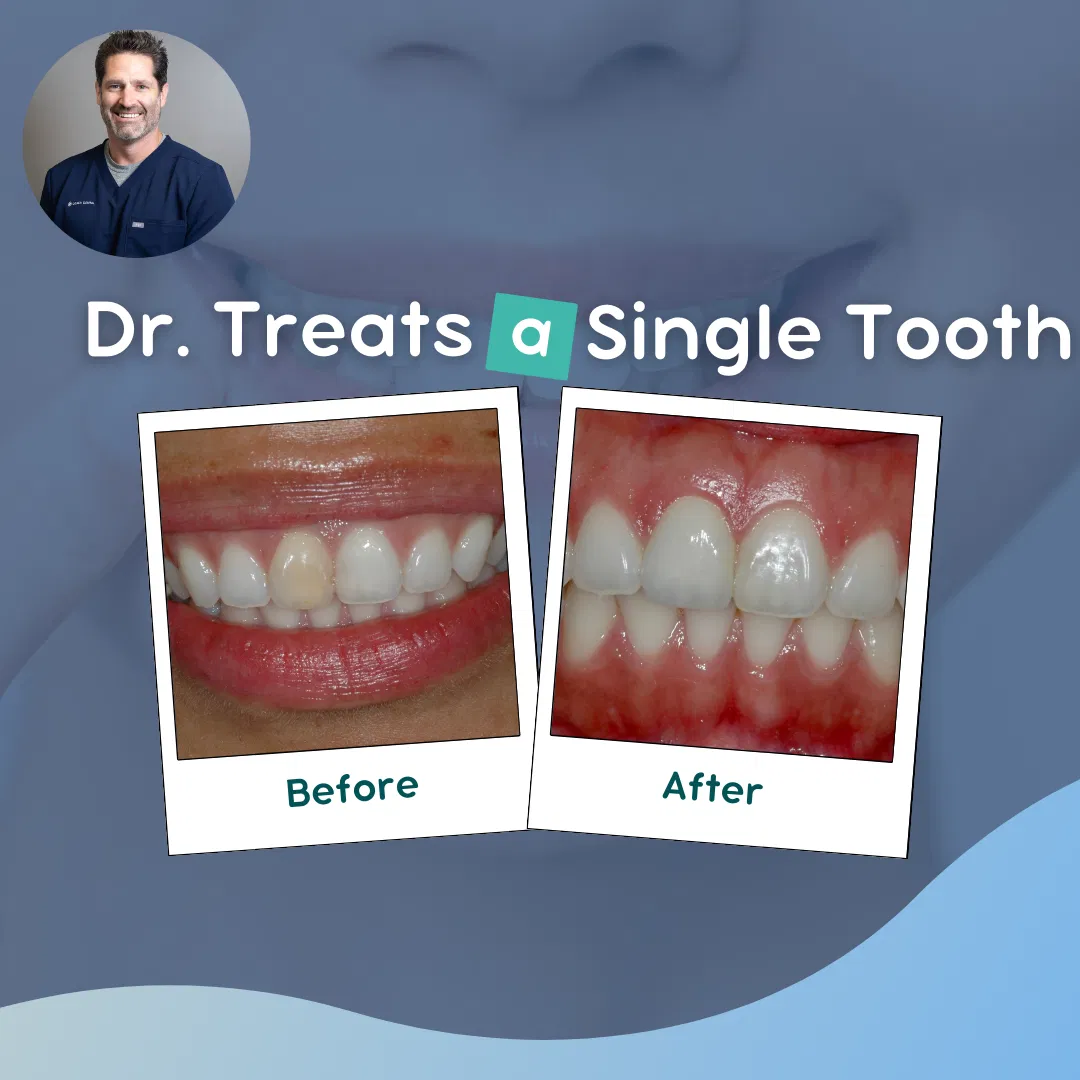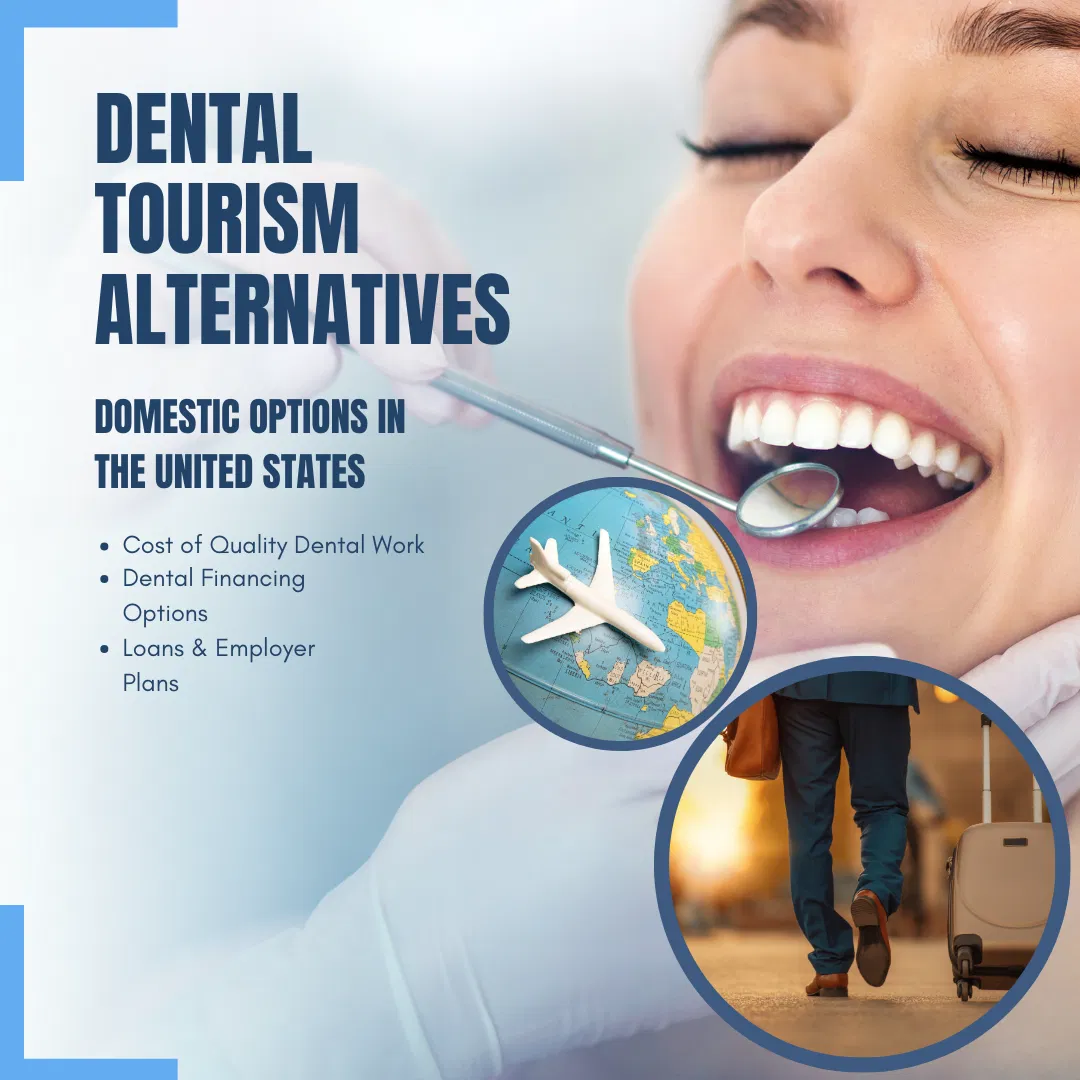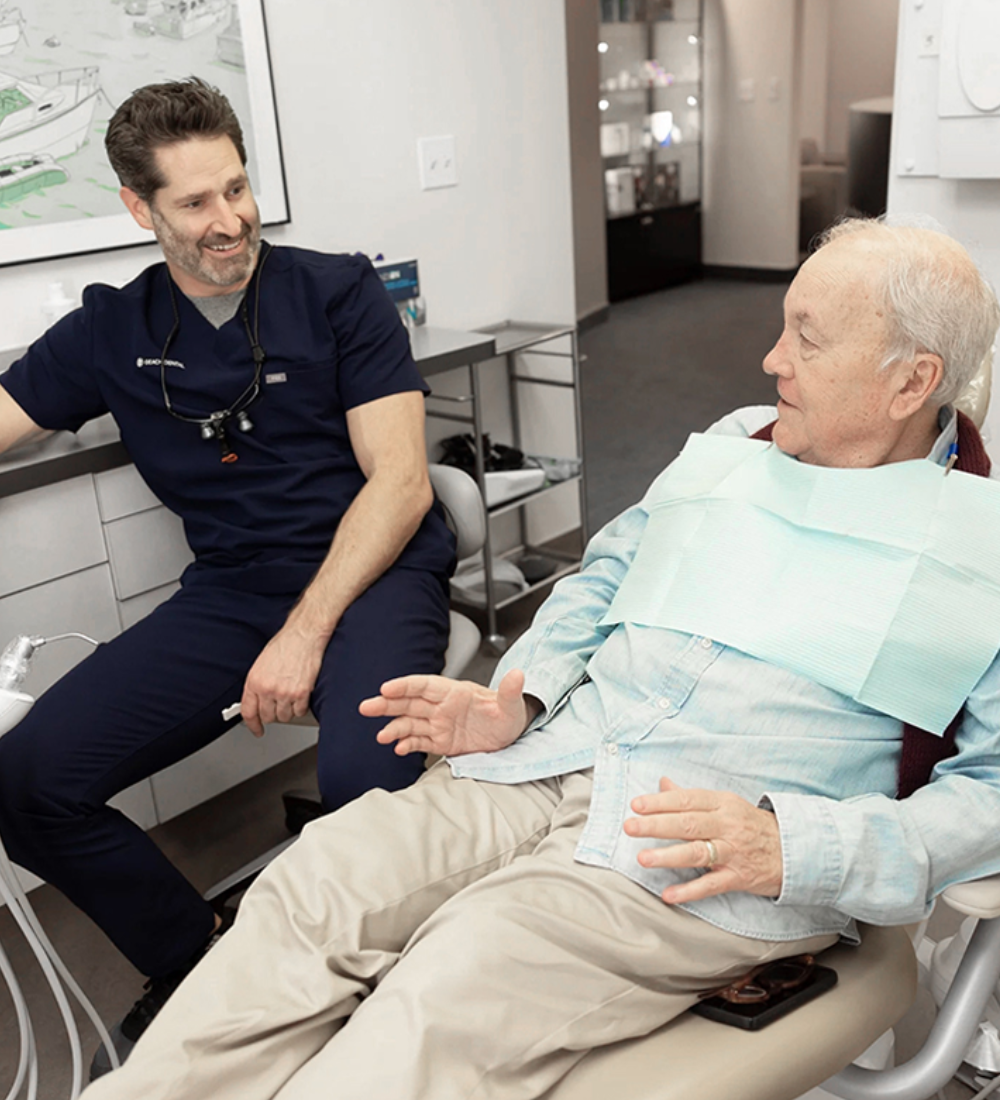All-on-4 is a transformative solution for individuals with missing teeth, offering a comprehensive approach to restoring both function and aesthetics. In this article, we break down the specific costs involved in each stage of this treatment and discuss various factors that can impact the overall expenses, helping you make informed decisions about whether All-on-4 is the right solution for your dental health and the investment required.

What is All-on-4 Dental Implant Treatment?
All-on-4 is a procedure that replaces an entire arch of teeth (either upper or lower) using just four strategically placed dental implants. The 4 implants are then used to support and retain a full bridge of teeth. The image above shows the approximate positioning of 4 implants into the upper jaw and how these implants support the teeth.
Unlike traditional dental implants, which often require more implants to support a complete set of teeth, All-on-4 maximizes the use of available bone and minimizes the need for extensive bone grafting procedures.
How All-on-4 Differs from Traditional Implants
1. Number of Implants
- Traditional Implants: Traditional implant solutions use a single implant to replace one tooth. All-on-4 uses a few as 4 implants to support and replace a whole arch of teeth. This greatly reduces cost.
- All-on-4: All-on-4 utilizes only four implants per arch, providing a stable foundation for the entire arch of teeth.
2. Bone Grafting
- Traditional Implants: In cases of severe bone loss, traditional implants often necessitate bone grafting procedures, adding to both the treatment time and cost.
- All-on-4: All-on-4 is designed to use available bone, reducing or eliminating the need for extensive bone grafting.
3. Immediate Function
- Traditional Implants: Patients with traditional implants need to wait several months for them to integrate with the bone before inserting teeth onto the implants.
- All-on-4: All-on-4 offers immediate function with patients leaving the dental clinic on the same day of the procedure with a fully functional set of teeth.
Benefits of All-on-4 Treatment
All-on-4 treatment offers a range of benefits, making it an appealing option for those seeking comprehensive dental restoration and tooth replacement:
- Improved Functionality: With All-on-4, patients can regain the ability to bite, chew, and speak confidently, enjoying a significant enhancement in their quality of life.
- Natural Aesthetics: The prosthesis used in the All-on-4 treatment is customized to provide a natural and aesthetically pleasing smile, boosting self-esteem and overall appearance.
- Preservation of Jawbone: All-on-4 treatments help preserve the jawbone structure and prevent further deterioration, which is common in cases of tooth loss.
- Efficiency: All-on-4 allows for quicker and more efficient treatment, reducing the number of dental visits and overall treatment time.
Factors Affecting All-on-4 Treatment Costs
Various factors influence the cost of All-on-4 dental treatment, and understanding these elements is crucial for those considering this procedure. A personalized treatment plan tailored to individual needs plays a significant role in determining the overall cost.
Complexity of the Case
- The extent of tooth loss, bone condition, and other oral health factors can affect the case complexity. More complex cases may require additional procedures, impacting the cost.
Type of Material Used
- The choice of material for the prosthesis, such as acrylic or zirconia, can influence the cost. Zirconia is more durable and aesthetically pleasing, but comes at a higher price.
Clinic Reputation and Expertise
- Clinics with experienced prosthodontists or oral surgeons may charge higher fees due to their expertise and track record of successful procedures.
Additional Procedures
- Supplementary treatments, such as bone grafting, sinus lifts, or additional implants may be required to prepare the mouth for full tooth replacement. The necessity of these procedures can affect the overall cost.
Type of Restoration
- Some patients may opt for a fixed, non-removable prosthesis, while others prefer a removable overdenture. The type of restoration chosen can impact costs.
Importance of a Personalized Treatment Plan
Every patient’s oral health needs are unique, so a personalized treatment plan is essential in determining the precise cost of All-on-4 treatment. During the initial consultation, your prosthodontist will assess your oral health, discuss your goals and expectations, and create a tailored plan that considers the factors specific to your case.
A personalized treatment plan ensures you receive the most effective and cost-efficient treatment for your circumstances. It also provides a transparent breakdown of the costs associated with each stage of the All-on-4 procedure. By working closely with your dental team, you can make well-informed decisions about your treatment and budget.

The Initial Consultation Process
The initial consultation and evaluation phase of All-on-4 dental treatment is a pivotal step. This stage not only sets the foundation for the treatment but also plays a crucial role in determining the overall cost.
- Introduction and Discussion: The initial consultation begins with a warm welcome to the clinic, where you will meet with the prosthodontist and their team. During this meeting, you can discuss your dental concerns, expectations and ask any questions.
- Oral Health Assessment: The prosthodontist will conduct a comprehensive examination of your oral health. This assessment involves X-rays, impressions, and other diagnostic tests to evaluate the condition of your teeth, gums, and jawbone.
- Discussion of Treatment Options: Based on your oral health evaluation, the prosthodontist will discuss suitable treatment options, focusing on All-on-4 as a potential solution. They will explain the procedure, its benefits, and the expected outcomes.
- Cost Estimation: Following the assessment and treatment discussion, the prosthodontist will provide an initial cost estimate for the All-on-4 treatment. This estimate may be subject to adjustment after further evaluation.
The Role of a Thorough Evaluation
A thorough evaluation during the initial consultation serves several critical purposes:
- Tailoring the Treatment Plan: The evaluation helps the prosthodontist customize a treatment plan that suits your needs. This personalized plan considers the number of implants required, the type of prosthesis, and any additional procedures needed to ensure the success of the treatment.
- Precise Cost Estimation: Through the evaluation, the prosthodontist can provide a more accurate estimate of the treatment cost. This estimate includes all stages of the All-on-4 procedure, as well as any supplemental treatments or materials.
- Transparent Information: The evaluation process allows you to receive detailed information about the procedure, potential complications, and expected outcomes. It ensures that you are well-informed and can make educated decisions regarding your treatment.
- Addressing Patient Concerns: Any concerns or questions you may have can be addressed during this stage, helping to establish clear communication and trust between you and the dental team.
By thoroughly evaluating your oral health and discussing your unique case during the initial consultation, the prosthodontist can create a tailored treatment plan that meets your specific needs. This level of customization not only improves treatment outcomes but also helps in providing a more accurate and detailed cost estimate for your All-on-4 dental treatment.
All-on-4 Treatment Stages
All-on-4 dental implant treatment involves several key stages, each with its associated costs. A comprehensive understanding of these stages is vital in determining the overall financial investment required for your smile restoration.
Stage 1: Dental Implant Placement and Insertion of the Preliminary Implant Bridge
The first stage of the All-on-4 treatment is the surgical placement of dental implants. This process involves:
- Diagnostic Tests: Before the surgery, diagnostic imaging (CT scan) is performed to plan for the position of the dental implants. Surgical guides are designed to aid in the precise placement of the implants.
- Anesthesia and Sedation: Using anesthesia and sedation ensures patient comfort during the surgery.
- Surgical Procedure: During the procedure, the prosthodontist or oral surgeon will use the surgical guide to place the dental implants into the jawbone.
- Insertion of Initial Implant Bridge: After placement of the dental implants, a preliminary bridge of teeth will be inserted onto the implants. This bridge provides immediate replacement and function for all of the teeth in one arch.
Stage 2: Final Implant Bridge Design and Fabrication
The cost of designing and fabricating the custom implant bridge varies depending on factors like material and complexity:
- Prosthesis Material: The choice between acrylic and zirconia can influence costs. Zirconia, being more durable and natural-looking, is preferred but is more expensive. The picture below shows an implant bridge milled from zirconia. This bridge was inserted onto 4 implants in the lower jaw.
- Implant Bridge Design: After the implants have healed, the preliminary implant bridge is removed and impressions are made to begin the digital design of the final All-on-4 implant bridge. Each implant bridge is unique to the individual. Size, shape and shade of the teeth are customized for each patient. A try-in of the final bridge design is critical to check for proper fit, occlusion and tooth position.

Stage 3: Final Implant Bridge Placement
The placement of the final implant bridge is an important step in completing the All-on-4 treatment:
- Checking Fit: The final implant bridge is securely attached to the dental implants with small screws. It is critical to make sure that the bridge fits properly into each of the implants to avoid damaging the implants or bridge.
- Adjustments: The prosthodontist carefully makes any adjustments to the occlusion. The goal is to create a comfortable biting position in harmony with the function of the muscles of the jaw.
- Aesthetics and Functionality: The final implant bridge is highly aesthetic and functions like natural teeth. You will be able to chew all of the foods you enjoy because the implant bridge is solid and permanently fixed to the dental implants as compared to a removable denture. Additionally, the implant bridge mimics the aesthetics of natural teeth. Here in our office, we customize each bridge by layering porcelain and adding shade to avoid the blocky, white appearance of fake teeth. The case below shows before and after replacement of the upper teeth with the All-on-4 treatment.

Stage 4: Follow-up Care
Follow-up visits are essential to monitor the success of the procedure. This includes:
- Annual Follow-Up Visits: Regular, yearly follow-up visits are necessary to check the prosthesis for any fractures. X-rays are taken and the implants are checked for signs of infection or bone loss.
- Oral Hygiene Guidance: Dental professionals guide proper oral hygiene and maintenance of the prosthesis. We recommend using a water flosser to clean under the implant bridge to flush out debris.
- Possible Repairs or Replacements: If the implant bridge is made of acrylic, chipping and fracturing of the material can occur over time. These problems can be repaired. If the implant bridge is made of zirconia, chipping and fracturing is much less likely. The zirconia bridge is a much more durable and long-term replacement.
It’s important to note that the costs mentioned for each stage are approximate and can vary based on individual cases. Working closely with your prosthodontist will provide a more accurate estimate based on your needs.
In the subsequent sections, we will explore additional factors influencing the cost of All-on-4 treatment and discuss insurance coverage and financing options.

Additional Procedures
In some cases, All-on-4 may require supplementary procedures to prepare the mouth and ensure the success of the treatment. These additional procedures can influence the overall cost of your restoration.
Potential Supplementary Procedures
Bone Grafting
- In cases of significant bone loss, bone grafting procedures may be needed to build up the jawbone for implant support. The cost of bone grafting depends on the extent of bone deficiency.
Sinus Lift
- In the upper jaw, a sinus lift procedure may be required to create space for dental implants without encroaching on the sinus cavity. This procedure can add to the overall cost.
Additional Implants
- In certain situations where a patient has a large dental arch or where more implants are needed to support an implant bridge, additional implants are placed to improve the success of the treatment. Placing additional implants helps to properly support the implant bridge. The picture below shows a case where 2 additional implants were placed into the upper jaw making this replacement an All-on-6.

Impact on the Overall Cost of All-on-4 Dental Implant Treatments
The need for supplementary procedures can impact the overall cost of All-on-4 dental treatment for several reasons:
- Procedure Complexity: More complex supplementary procedures may incur higher costs due to increased time and materials required.
- Number of Procedures: The need for multiple supplementary procedures will naturally add to the overall expense.
It’s important to remember that only some patients will require these supplementary procedures. A thorough evaluation during the initial consultation, as discussed earlier, will determine whether any of these treatments are necessary. Your prosthodontist will provide detailed information on the specific procedures needed for your case and their associated costs.

Insurance Coverage for All-on-4 Treatment
- Pre-authorization: We can contact your dental insurance provider to inquire about pre-authorization. Pre-authorization will determine how much your insurance will cover towards your treatment cost.
- Coverage Limitations: Dental insurance policies limit coverage for major procedures. It’s crucial to understand these limitations and how they apply to All-on-4.
- Out-of-Pocket Costs: All-on-4 treatment is mostly an out-of-pocket expense. Generally, only a small portion is covered by insurance. It is important to discuss all possible treatment options with your prosthodontist to complete a treatment plan within your budget.




